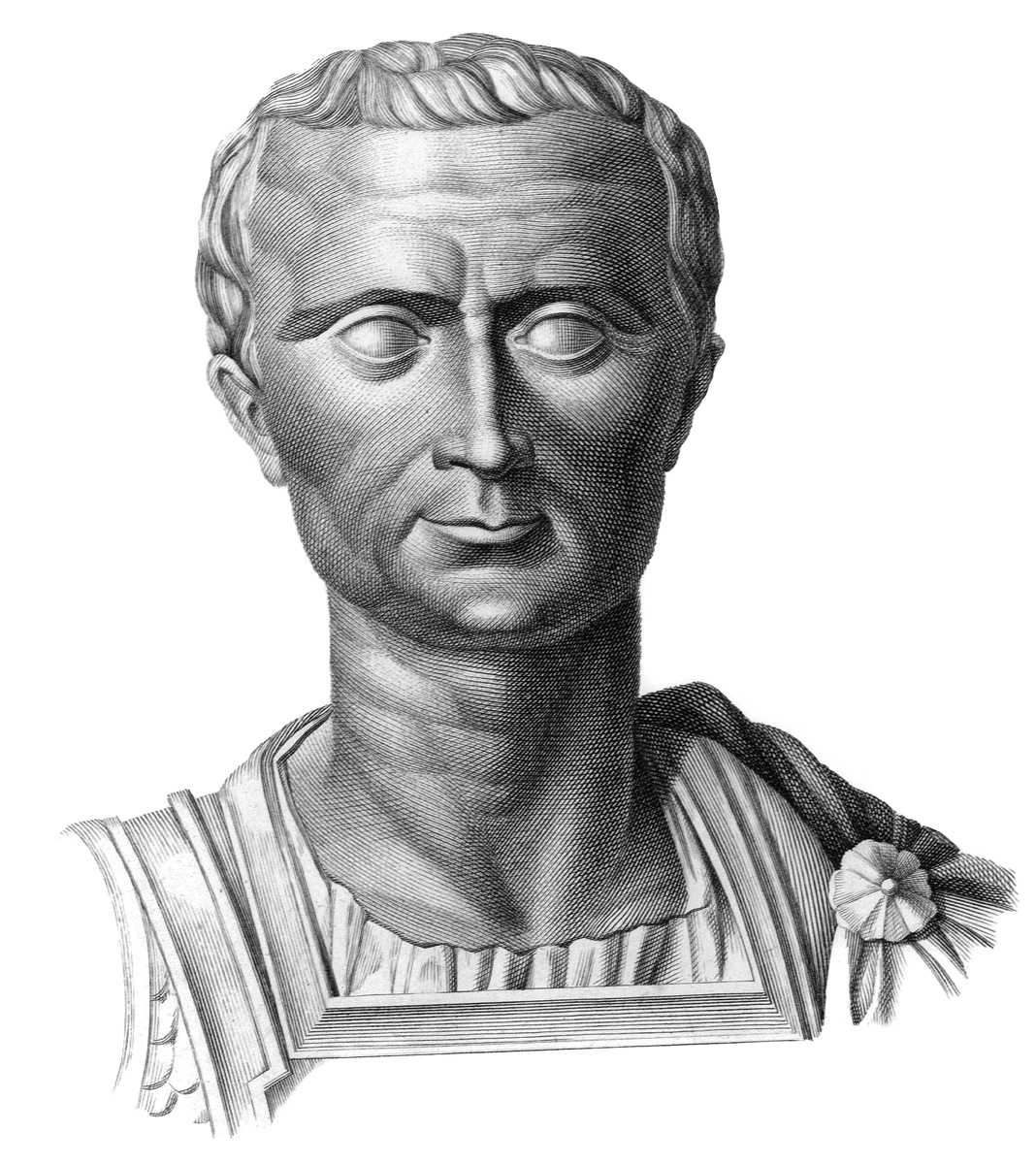
Gaius Julius Caesar.
Paris, Palace of Saint-Cloud
(Château de Saint-Cloud).
p.133 No. 45. [B. 36]. Basalt life-size bust of St. Cloud, destroyed in 1870, during the siege of Paris. This piece has a legendary importance for the value attached to it while it was in existence. I made inquiries to learn if any plaster copy of it had ever been made, and heard of none: a degree of thoughtlessness about the preservation of such things that has its counterpart in many another collection, p.134 both public and private. Bernoulli in 1884 declared that it only exists in Visconti’s engravings. Of these I procured photograph copies, here reproduced. The drawings made for Visconti I am quite sure were not accurate. There is a sharpness about the nose, mouth, and chin, and a loftiness of forehead, quite exaggerated. These peculiarities are not only not in harmony with the conceded best portraits, but they are in each case abnormal, and suggest inaccuracy of the artist who made the drawings for the engraver, rather than faults of the bust. Believing the latter to have been better than the drawings show it, we must draw upon imagination to picture what it was. It does not seem likely that so careful a writer as Visconti would furnish us engravings of only the great Naples bust and this one, unless he was convinced of the great importance of the latter as well as the former. Bernoulli thinks it strongly resembled the Pisa bust. It is possible. But he also suggests a resemblance to the bronze head in the Paris Cabinet des Medailles (see No. 7, on plate at head of Chapter VI), from which it must have differed most radically, or the Visconti engravings were even greater failures than I assume them to p.135 be. A resemblance to the Berlin bust seems to me more likely. Indeed, the moment I first saw the Visconti engravings, it reminded me of that head. All of this type, which I will call the Pisa type, are so different in expression from the Naples head, and the head of the Conservatori statue in Rome on one side, and from the Chiarmonti Gallery bust, No. 107, and the Tresoria bust in Florence on the other, that they form three distinct types.
After the above was written, I had the good fortune to be furnished with the address of the genial and venerable Professor Froehner of Paris, who was commended to me by Mr. Solomon Reinach as one of the best-informed archaeologists of France. He was reader for Napoleon III during the years before the destruction of St. Cloud, when the latter was composing his life of Julius Caesar. I found his reminiscences very interesting. This bust, he told me, stood on the mantel of the room where he worked, and was a familiar figure to his eyes every day. He is sure that it was not an antique, and remembers it as a poor piece of sculpture, and an uninteresting piece of portraiture. He thought it was not brought away from St. Cloud when valuable works of art were being hurriedly removed to Paris simply because it was not considered of value enough to trouble with. M. Froehner’s opinion concerning the non-antiquity and the poor workmanship of the bust I respect absolutely; but whether in those days of his youth he had a thoroughly well-informed judgment concerning Julius Caesar’s portraiture is a question. At any rate, Visconti and Froehner, both having seen the bust, must be left to face each other.
Bernoulli J. J. Römische Ikonographie. Tl. 1. Die Bildnisse berühmter Römer mit Ausschluß der Kaiser. Stuttgart, 1882. S. 161, Nr. 36.
Scott F. J. The Portraitures of Julius Caesar. New York, 1903. P. 133—
1882. Description (1): Bernoulli J.J. Römische Ikonographie. Tl. 1. Die Bildnisse berühmter Römer mit Ausschluß der Kaiser. Stuttgart, 1882. S. 161, Nr. 36.
1903. Description (2): Scott F. J. The Portraitures of Julius Caesar. New York, 1903. P. 133—135.